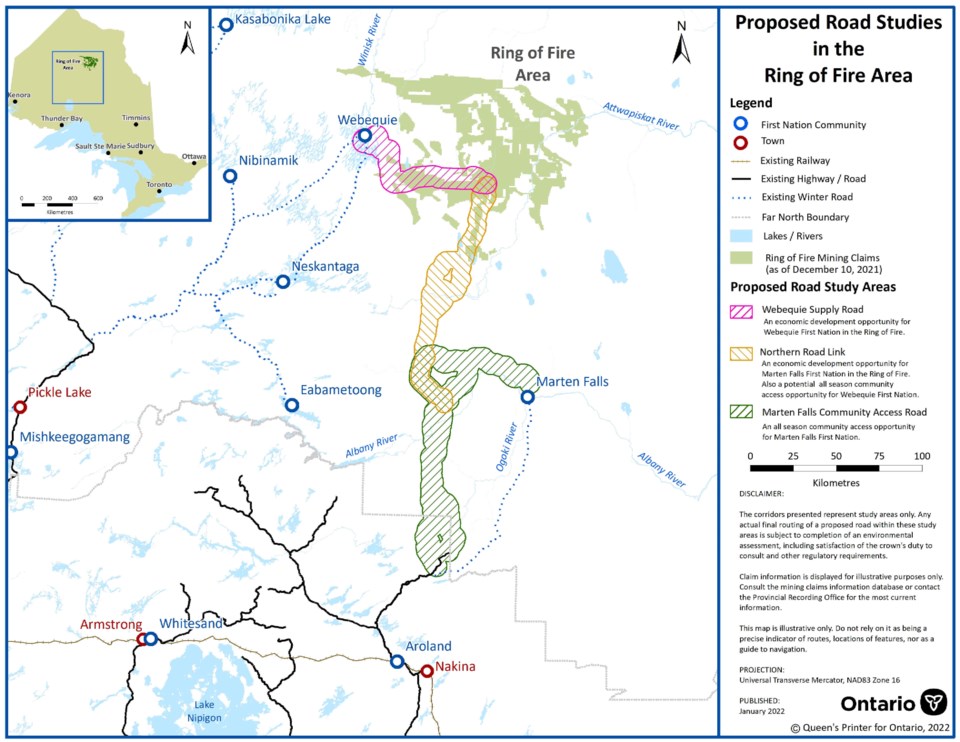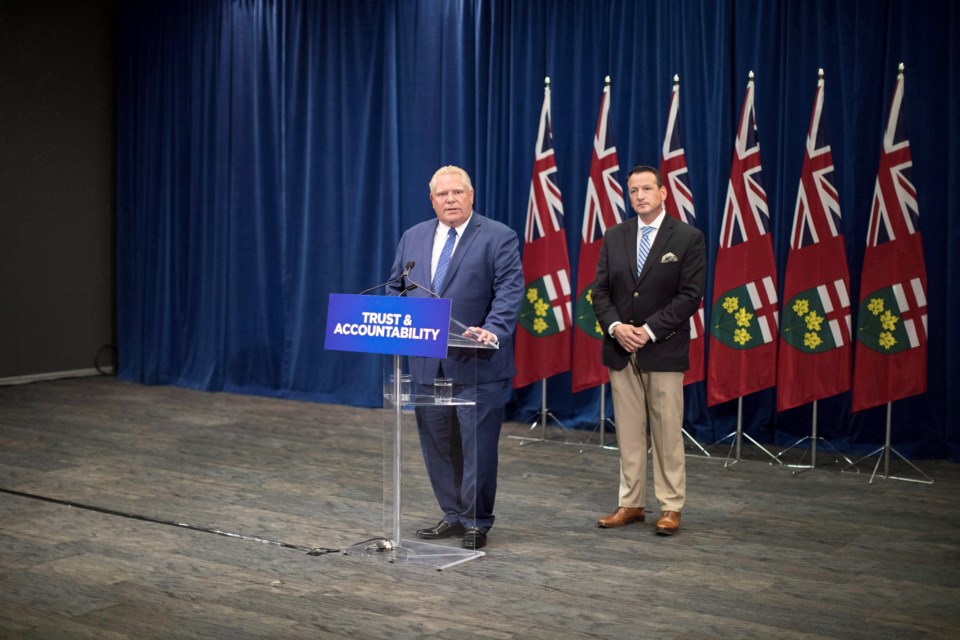While he's "optimistic" about getting a deal done at some point in his two-year term, Aroland First Nation Chief Sonny Gagnon said the first part of the road to the Ring of Fire isn't as close as the premier is making it out to be.
"We had great conversations with Aroland, the Chief of Aroland. We're about that far away from signing a deal to get the first 80 kilometres of road," Ford said last week, nearly pinching together his thumb and index finger.
Ontarians will “hear more news about the road to the Ring of Fire very shortly," the premier also told a municipal conference earlier that week.
Those statements might be "a little premature," Gagnon told The Trillium on Monday.
"We haven't really scratched the surface," the chief said.
“It’s still early stages of talking to our membership."
Up for discussion are revenue-sharing, electrification, housing, and protecting Aroland members' way of life, including hunting and fishing, Gagnon said, stressing that his community is "pro-development" but must get a good deal.
Aroland's membership is about 700 people, but about half live in Thunder Bay due to a lack of housing, Gagnon said. The First Nation's infrastructure was designed to support 80 houses, but it now has 130, he said.
Add in the increased demand of a potential mining boom, and "we're gonna need a lot more housing and infrastructure in the community," he said.
"There's lots to discuss. But again, I'm very optimistic that we'll come to a conclusion, hopefully within my two-year term here," said Gagnon, who was elected in November.
The Ring of Fire is a mineral-rich area about 400 kilometres northeast of Thunder Bay in northern Ontario, which doesn’t currently have all-season road access. The Ford government sees unlocking deposits of minerals like cobalt and chromite in the area as a key component of its plan to create an end-to-end EV supply chain in Ontario.
The road to the Ring of Fire project has three parts. If built, the Marten Falls Community Access Road would run from Aroland, which is connected to the existing highway network, to Marten Falls Nation. From there, the Northern Road Link would connect the Marten Falls road to the Ring of Fire Region, just east of Webequie First Nation. Another road — the Webequie Supply Road — would connect the Ring of Fire region to Webequie territory.

Ontario has reached a deal with Webequie and Marten Falls to set the project in motion. Environmental assessments are ongoing.
Ford’s push to develop the region has also alienated some First Nations leaders. Cat Lake First Nation Chief Russell Wesley received an injunction last month to stop the construction of a road to a gold mining project, alleging the government failed to consult them.
Gagnon said he planned to "walk softly" as he knows not all of his neighbours are in favour.
"One thing's for sure: if $90-billion worth of mineral is going to come out of the Ring of Fire, I'm not going to sit and watch that go by my front door," he said.
"We're living in third-world conditions, and here's an opportunity where we can manage to get out of these kinds of conditions and to be self-sustaining."
